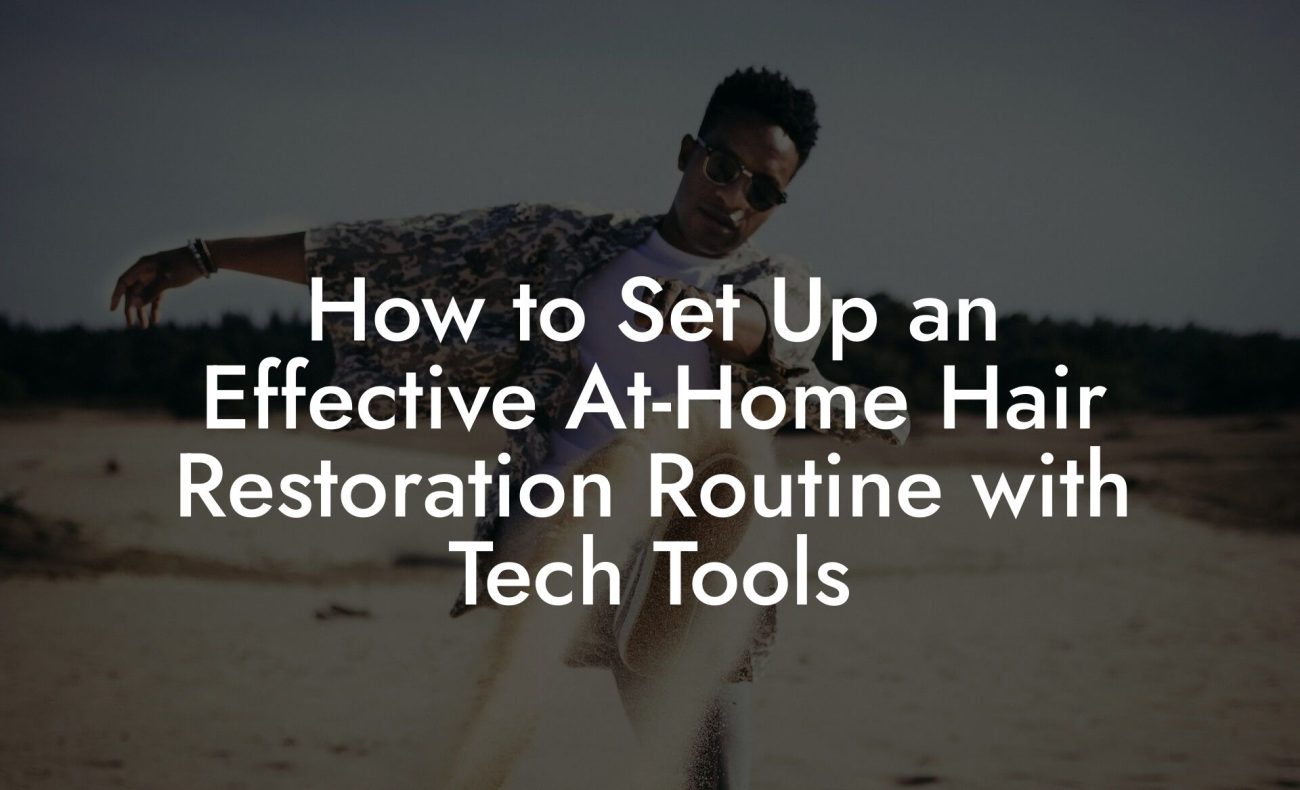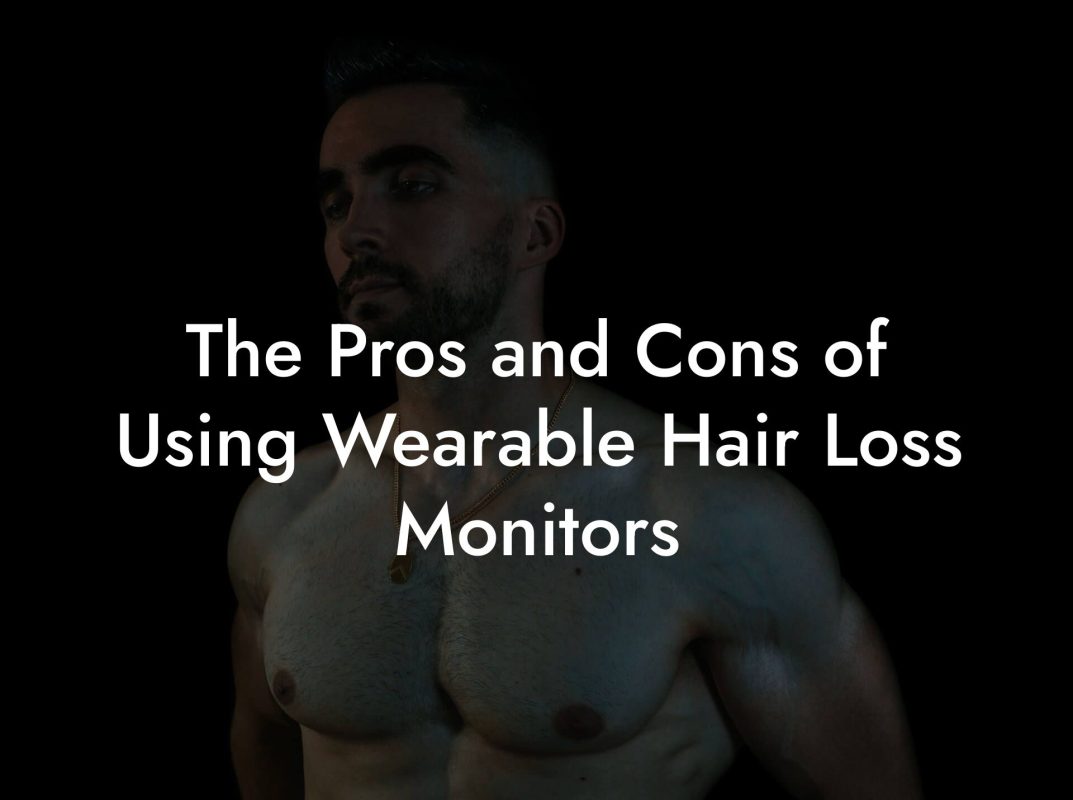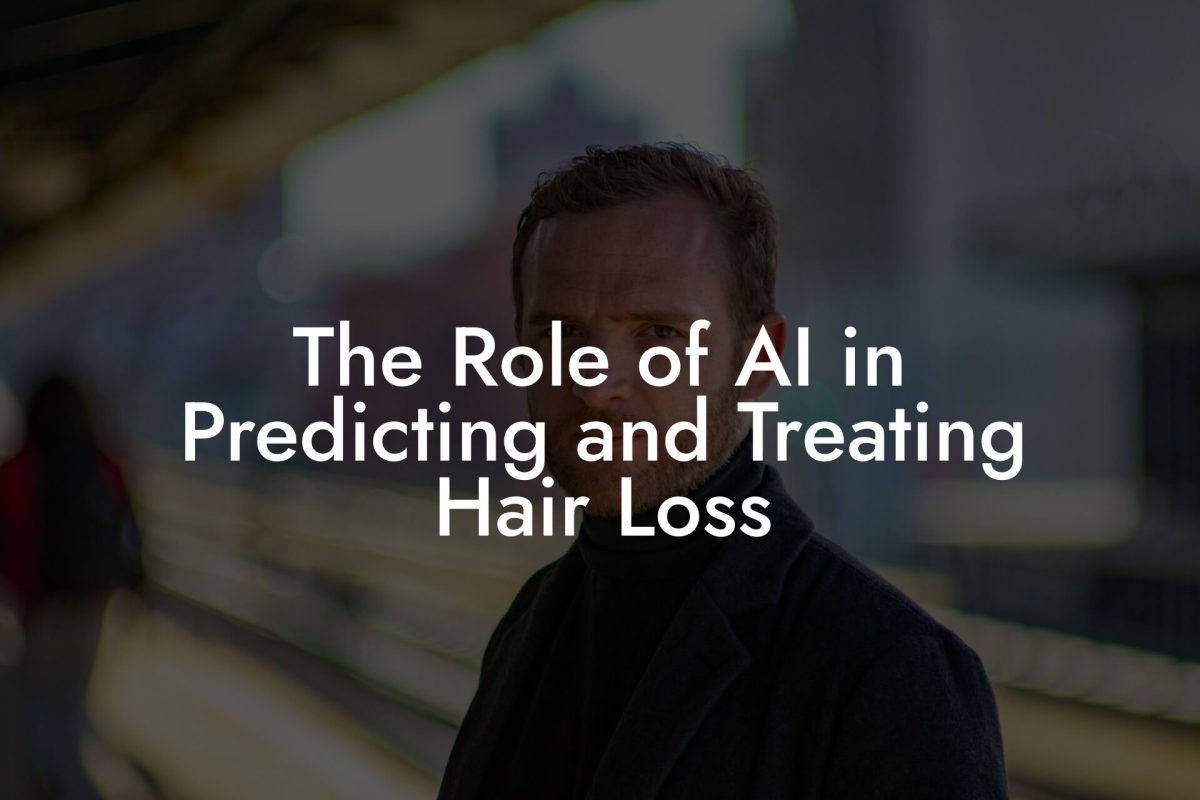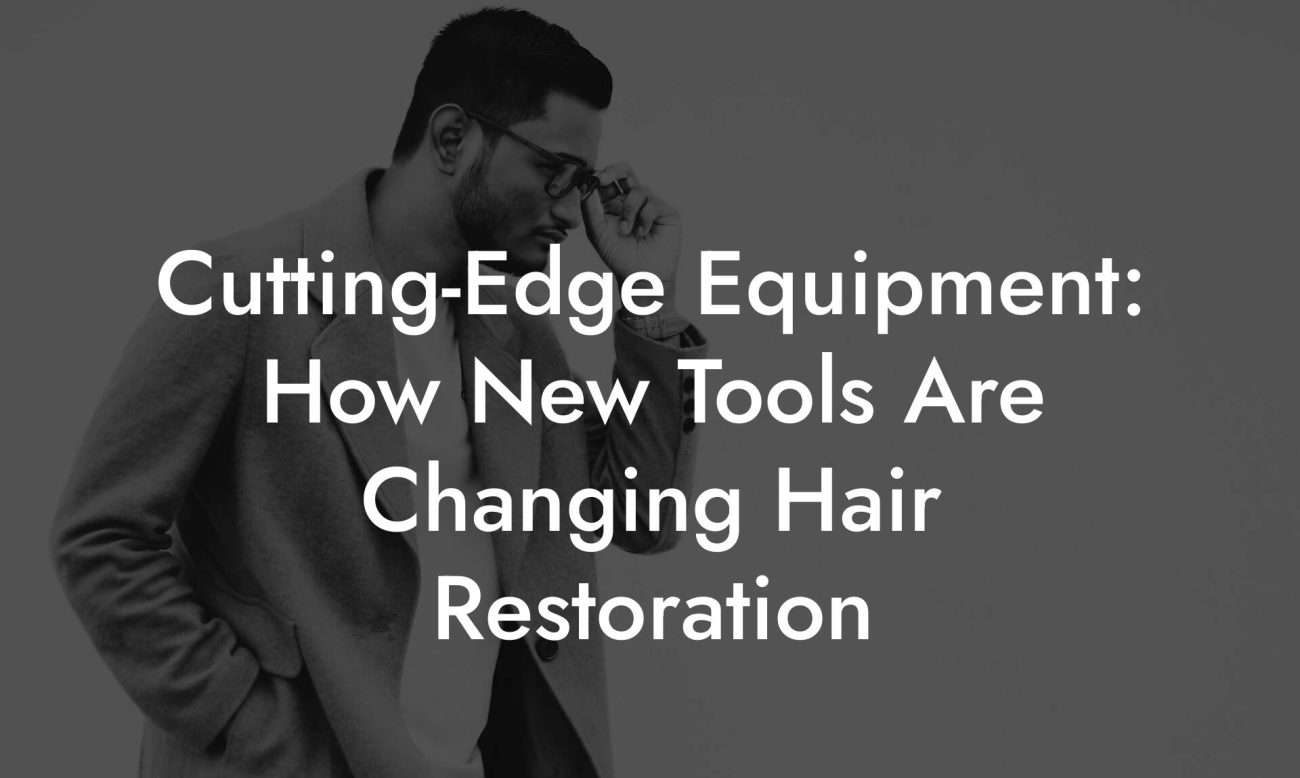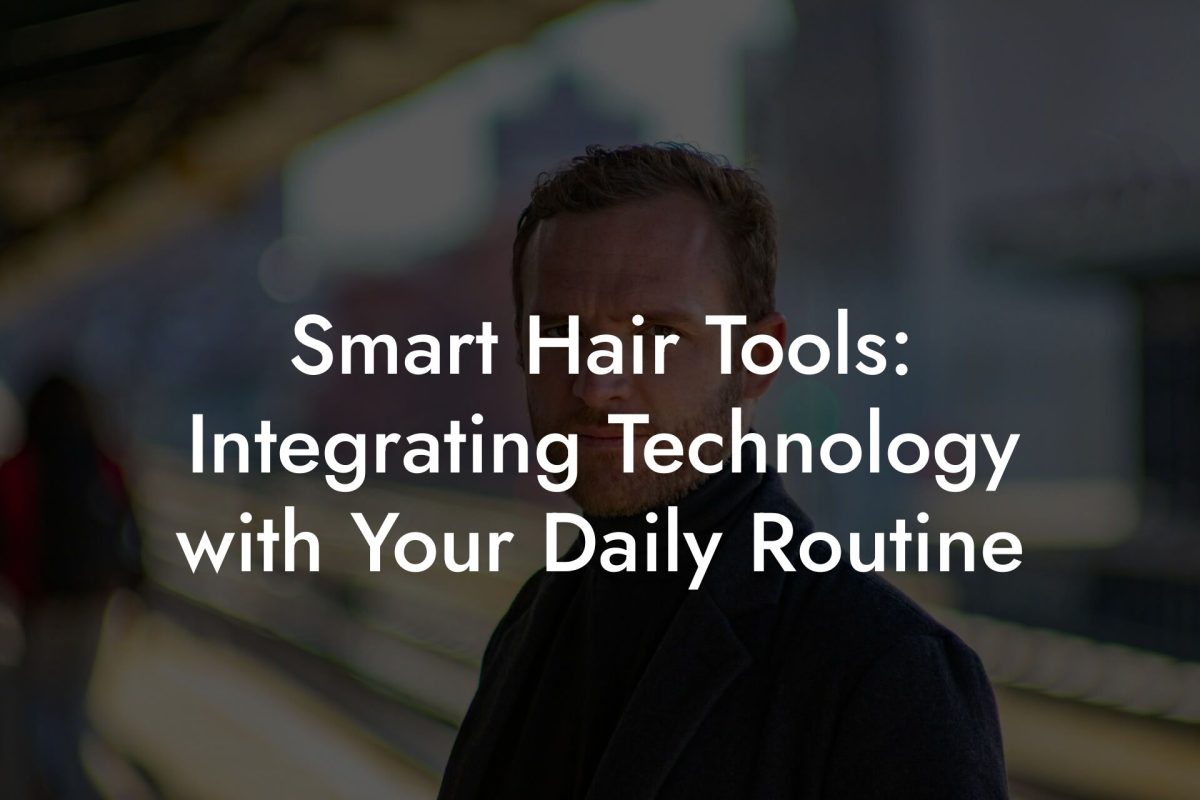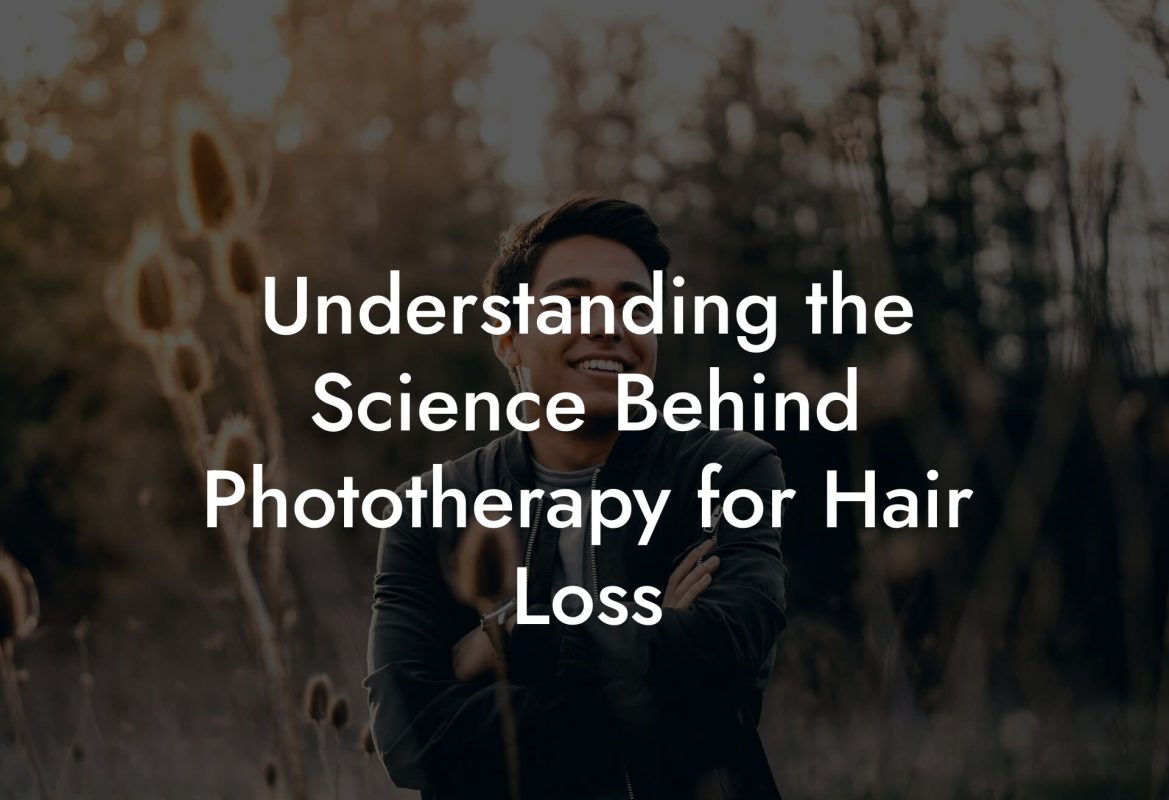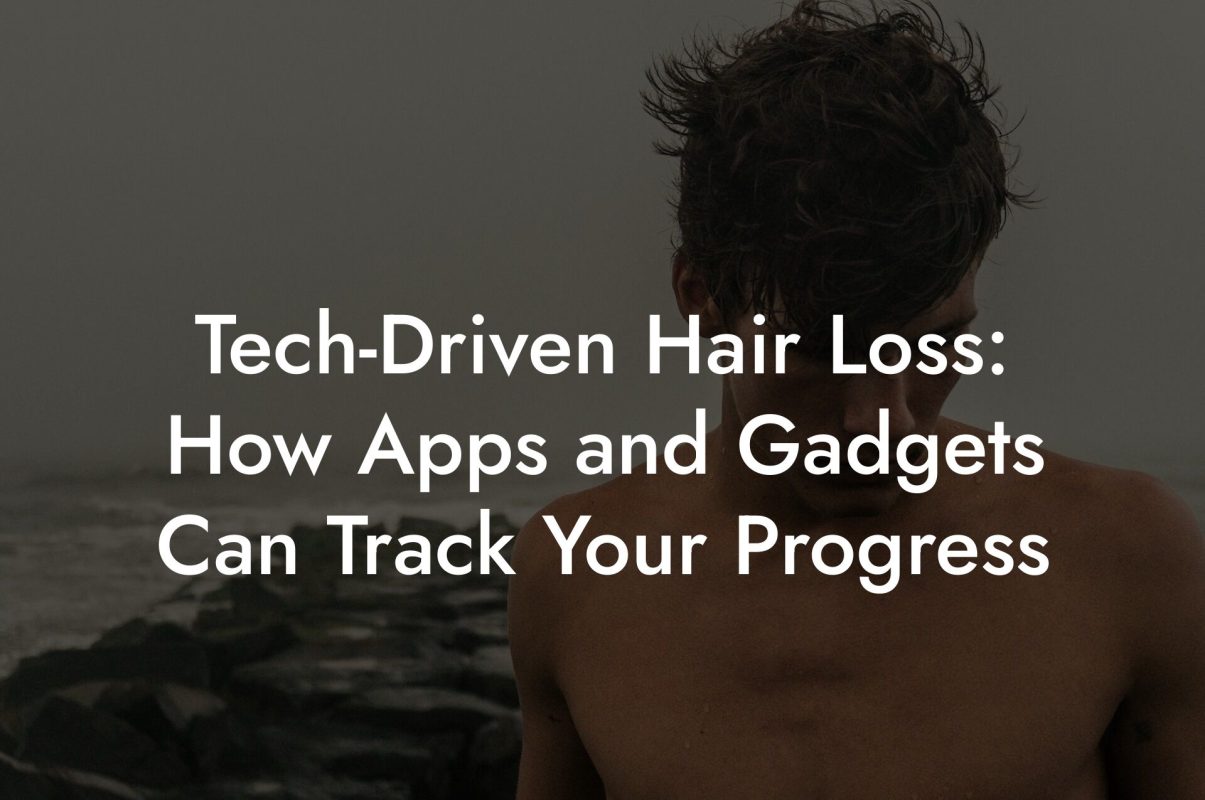Hair Loss Library
Comparing At-Home vs. In-Clinic Hair Restoration Devices

Ever looked in the mirror, scratched your head, and wondered if there’s a magic gadget out there that can bring back your luscious locks without emptying your wallet or scheduling endless doctor appointments? Welcome to Mane Matrix’s deep-dive on comparing at-home vs. in-clinic hair restoration devices—a no-nonsense, laugh-out-loud guide crafted especially for millennials and Gen Z dudes navigating the wild world of men’s hair loss. Here, we blend expert analysis with a refreshing dose of humor, making the journey to reclaiming your hairline as engaging as binge-watching your favorite series.
Understanding Hair Loss and Restoration: The Facts, the Myths, and the Must-Knows
Hair loss can feel like a mysterious nemesis—one moment you’re rocking thick strands, and the next, you’re wondering if your scalp is auditioning for a role in a chrome dome commercial. But here’s the scoop: nearly every guy will face some degree of thinning as he ages. The reasons are as varied as your favorite memes: genetics, hormonal shifts, stress, even the environment (yes, pollution can be a follicle foe). While the quest for robust hair can sometimes feel like a never-ending saga, modern technology has gifted us with innovative devices designed to tackle the problem head-on, offering hope and options that cater to different lifestyles and budgets.
The two main camps in the hair restoration arena are at-home devices and in-clinic treatments. But how do you decide which is right for you? Whether you’re the DIY type or prefer professional hands-on care, our guide breaks down what you need to know. We’ll cover everything from the science behind these devices to the practical considerations like cost, convenience, and safety. Ready to embark on this follicular adventure? Let’s dig in!
At-Home Hair Restoration Devices: Your DIY Hair Revival Toolkit
Picture this: you’re in your pajamas, chilling at home, and suddenly, your at-home hair restoration device whispers promises of regrowth and thicker hair. At-home devices have exploded in popularity as a convenient, cost-effective way to potentially reverse hair loss. These gadgets are designed to be user-friendly, allowing you to perform treatments in the comfort of your own space, on your own schedule.
At-home devices come in a couple of flavors. There are laser combs, LED light therapy helmets, and even low-level laser therapy (LLLT) units that claim to stimulate hair follicles with non-invasive light energy. Most of these devices are backed by research showing that, when used consistently, they might help pause hair thinning and occasionally encourage regrowth.
The appeal? Convenience. You’re free from the hassles of scheduling appointments and traveling to a clinic. Plus, the devices are usually designed with safety in mind, offering a low-risk, non-surgical approach to managing hair loss. However, like any at-home project, the results depend heavily on regular usage and proper technique. And while the idea of turning your bathroom into a mini spa for your scalp sounds enticing, it’s important to manage expectations—these devices aren’t instant magic wands.
The bottom line is: if you’re after a flexible, budget-friendly option that lets you be the master of your own hair restoration destiny, at-home devices may just be your ticket to a fuller mane.
In-Clinic Hair Restoration Devices: When Professional Precision Takes Center Stage
Now, imagine walking into a high-tech clinic where experts use state-of-the-art devices to combat hair loss. In-clinic hair restoration isn’t just about fancy equipment—it’s about personalized care delivered by professionals who know their stuff. From advanced laser therapy to platelet-rich plasma (PRP) treatments, in-clinic solutions harness the latest in medical advancements to provide targeted results.
In-clinic devices typically offer more powerful treatments than their at-home counterparts. They often employ higher doses of laser energy or use specialized technologies that require professional calibration and oversight. This means they can sometimes achieve faster or more noticeable results, especially for individuals with more severe hair loss or specific underlying conditions.
While the idea of heading to a clinic might conjure images of sterile rooms and awkward small talk, the reality is far more approachable today. Clinics are evolving into comfortable, high-tech hubs where your privacy and comfort are prioritized. Experts not only administer treatments but also provide customized recommendations based on your unique hair loss pattern and scalp condition.
Ultimately, if you’re seeking a solution where cutting-edge technology meets expert care, in-clinic devices could be the way to go. They may be a bit pricier and less convenient than at-home alternatives, but the professional touch often translates to enhanced efficacy and personalized treatment plans.
At-Home vs. In-Clinic: Weighing the Pros and Cons
So, how do you choose between the DIY charm of at-home devices and the expert finesse of in-clinic treatments? Let’s break it down by comparing the key factors that matter the most.
Cost and Investment
Money matters—especially when it comes to long-term treatments. At-home devices generally come with a lower upfront cost and don’t require recurring clinic fees. They’re a great option if you’re on a tight budget or simply prefer a low-cost, ongoing treatment routine. On the other hand, in-clinic treatments tend to have a higher price tag, largely due to the specialized equipment and expert attention. While upfront costs are higher, many clients see this as an investment in rapid, noticeable results.
Effectiveness and Technology
In terms of sheer technological prowess, in-clinic devices often have the edge. They employ more powerful and precisely calibrated equipment, which can result in faster or more robust results. However, at-home devices have their merits too. Modern at-home gadgets incorporate sophisticated technologies that make them not only safe but also quite effective—provided you use them correctly and consistently.
Convenience and Time Commitment
Convenience is king in today’s fast-paced world. At-home treatments score high in this area because you can integrate them into your daily routine—think of it as another checkbox on your self-care list, like that morning coffee or your nightly skincare ritual. In-clinic options, while requiring scheduled appointments, relieve you from the need to constantly self-monitor and adjust treatments. They’re perfect for someone who values a hands-off approach and enjoys expert interaction.
Customization and Professional Oversight
In-clinic treatments offer a level of customization that at-home devices can’t quite match. A specialist can assess your scalp condition, adjust intensity levels, and tailor your treatment plan with a high degree of precision. If you have unique medical concerns or a complicated hair loss history, the professional oversight provided in a clinical setting may be indispensable. At-home setups, however, are designed for the everyday user—simple, safe, and effective for general hair restoration without the need for intricate customization.
Safety and Side Effects
Safety is always a priority when tinkering with high-tech devices on your body. Most at-home devices are rigorously tested to ensure they don’t pose a major risk when used properly. Still, mishandling them or overusing them can lead to unintended side effects, such as scalp irritation. In a clinical environment, trained professionals manage the treatment process, reducing the chance of error. This makes in-clinic options particularly appealing if you’re concerned about safety and want a procedure with built-in safeguards.
Commitment, Motivation, and Lifestyle
Consider your lifestyle and level of commitment when choosing between the two. At-home treatments require a disciplined routine—if you’re frequently off schedule or not particularly detail-oriented, you might not see the best results. In contrast, in-clinic treatments are managed by professionals, freeing you from daily responsibilities and ensuring consistency. However, if you enjoy taking charge of your self-care regimen and appreciate the flexibility of doing it on your terms, at-home devices can be a rewarding, empowering option.
Deep Dive: How At-Home and In-Clinic Devices Actually Work
Whether you’re a tech nerd who loves understanding the science behind gadgets or someone who just wants to know if it works, here’s a closer look at how these devices operate.
Mechanisms Behind At-Home Devices
At-home hair restoration gadgets typically leverage low-level laser therapy (LLLT) or LED light therapy. The idea is simple: specific wavelengths of light are absorbed by the scalp, stimulating hair follicles and encouraging increased blood flow. This, in turn, might extend the active growth phase of hair and encourage the production of new follicles. Think of it as giving your hair follicles a gentle nudge to wake up and get to work.
While these devices are non-invasive and painless, they do require a steady commitment to see cumulative benefits. Most manufacturers recommend using them for 15 to 30 minutes per session, several times a week, over the course of several months. It’s a bit like tending to a garden—you won’t see results overnight, but with consistent care, your scalp can become a fertile ground for renewed growth.
Inside the Clinic: Professional Technology at Work
In-clinic devices take a more tailored approach. Many advanced clinics employ systems that combine laser therapy with other techniques, such as microneedling or PRP injections, which use your body’s own growth factors to boost regeneration. These treatments are performed under the strict supervision of trained professionals who can adjust the parameters to suit your skin type and hair loss severity.
Professional settings also utilize diagnostic tools like dermatoscopes to closely examine your scalp and track progress over multiple visits. This ensures that the treatments are not only scientifically based but also personalized to your needs. The more powerful devices used in clinics can deliver higher doses of light energy, which can sometimes lead to quicker and more dramatic improvements—but they come with the caveat of needing professional oversight to avoid over-treatment.
Real-Life Experiences: Success Stories from Mane Matrix Users
Nothing beats hearing from the boys on the front lines. Over the years, Mane Matrix has gathered an impressive collection of testimonials from men who have tried both at-home and in-clinic hair restoration. Their stories highlight that while there’s no one-size-fits-all solution, both approaches have helped many regain not only hair but also confidence.
Jason’s Journey: From DIY Doubter to At-Home Advocate
Jason, a 32-year-old digital marketer and self-proclaimed “tech geek,” was initially skeptical about at-home devices. “I mean, could a little laser really do the trick?” he recalls. After reading up on scientific studies and browsing through Mane Matrix’s expert data, he decided to give an at-home LLLT helmet a whirl. Sticking to a disciplined routine, Jason began to notice subtle changes after three months. “It wasn’t an overnight miracle, but when the hairline started moving forward and thinning areas began filling in, I knew I was onto something,” he shared with a mix of relief and pride. His experience clearly underscores the power of persistence and the potential of modern at-home tech.
Evan’s Expert Endorsement: The Clinic Conundrum
Evan, a 40-year-old entrepreneur who prefers a more hands-off approach, opted for in-clinic treatments. “I love the idea of having an expert guide me through the process,” he explains. After a series of sessions featuring advanced laser therapy combined with personalized microneedling, Evan’s scalp showed marked improvements in density and overall health. “It’s not just about the gadgets—the clinic environment, the personalized consultation, and the follow-up care really made the difference,” he added. Evan’s story highlights how professional oversight can be the X-factor when it comes to achieving rapid and noticeable results.
Mixed Methods: When a Hybrid Approach Works
And then there’s Marcus, a 28-year-old fitness enthusiast who decided to combine both methods. “I figured why not get the best of both worlds?” Marcus explains. By alternating between at-home treatments on busy weeks and booking in-clinic sessions when he had time for a complete scalp evaluation, Marcus carved out a regimen that kept him engaged and steadily progressing. His strategy shows that sometimes, a hybrid approach can cater to both lifestyle flexibility and professional precision.
These real-life accounts illustrate that the path to hair restoration may be as diverse as the men embarking on it. Whether you go solo with an at-home device or lean on professional guidance, the key is consistency, informed choices, and a willingness to adapt your approach as needed.
Expert Recommendations: Mane Matrix’s Top Tips
Here at Mane Matrix, our experts are all about cutting through the noise and delivering clear, actionable advice. After extensive research and firsthand user feedback, these are our top recommendations when choosing between at-home and in-clinic hair restoration devices:
- Be Honest About Your Commitment: At-home devices are fantastic if you’re disciplined and can commit to a regular routine. If you’re prone to skipping days or prefer a structured schedule, in-clinic treatments might suit you better.
- Assess Your Hair Loss Stage: Early-stage thinning may respond well to at-home devices, while advanced hair loss often benefits from the more potent treatments available in clinics.
- Consult a Professional: Even if you lean towards at-home options, scheduling a consultation can provide clarity on your specific condition and tailor your approach.
- Consider Hybrid Solutions: Sometimes, incorporating both methods can yield the best results—leveraging the convenience of at-home devices while periodically tapping into professional expertise.
- Mind the Safety Guidelines: Regardless of your choice, follow the manufacturer’s instructions to avoid over-treatment and minimize the risk of scalp irritation.
The road to hair restoration is a personal journey. Our advice is designed to empower you to make informed decisions that fit your unique lifestyle and goals. Whether you’re tech-savvy, time-crunched, or looking for expert guidance every step of the way, remember that the best solution is the one that keeps you motivated and confident throughout the process.
Integrating At-Home and In-Clinic Approaches: The Hybrid Option
Let’s be real—life isn’t always black and white, and hair restoration doesn’t have to be either. Many men are discovering that blending at-home and in-clinic methods can offer a level of flexibility and effectiveness that neither can provide alone. This hybrid approach allows you to enjoy the convenience and cost-effectiveness of at-home treatments while also taking advantage of the precision and personalized care from professional sessions.
For instance, you might begin with in-clinic sessions to jumpstart the process and get a comprehensive scalp analysis. Once you have a solid baseline and a clearer picture of what your hair needs, you can transition to incorporating regular at-home treatments to maintain and boost the gains achieved in the clinic. Periodic check-ins with a specialist can ensure that your routine remains effective while allowing you to fine-tune your regimen based on progress and any new challenges.
The hybrid method is particularly beneficial for those with fluctuating schedules or budget constraints. It combines the best of both worlds, offering a balanced strategy that keeps you actively engaged in your hair restoration journey. With careful planning and a willingness to adapt, a hybrid approach can provide the comprehensive care your scalp craves, all while fitting seamlessly into your modern, dynamic lifestyle.
Resources and Community Support: Your Next Steps
Embracing hair restoration is not just about the devices or the treatments—it’s about joining a community, arming yourself with knowledge, and taking proactive steps toward reclaiming your confidence. Whether you’re diving into detailed product reviews, following expert advice on Mane Matrix, or connecting with other men experiencing similar journeys, there’s a world of resources waiting for you.
Here are some actionable next steps to help you move forward:
- Explore Detailed Guides: Browse comprehensive articles and videos that break down the science, usage tips, and user reviews of both at-home and in-clinic devices.
- Engage with Our Community: Sign up for Mane Matrix newsletters and join online forums or social media groups where fellow hair warriors share tips, success stories, and support.
- Schedule a Consultation: If you’re leaning towards a professional approach, consider booking a virtual consultation. Our experts can evaluate your hair loss pattern and offer personalized advice without the awkwardness of traditional appointments.
- Create a Routine: Whether you choose at-home devices, in-clinic sessions, or a combo of the two, design a consistent schedule. Use digital reminders, apps, or calendars to track your progress and stay motivated.
- Stay Updated: The world of hair restoration is rapidly evolving. Subscribe to industry newsletters and follow verified experts to stay informed about the latest breakthroughs and technological innovations.
Remember: each step you take is a step toward not only restoring your hair but also reclaiming your confidence. Embrace the journey, lean on the community, and continue learning—because every piece of information is a tool in your arsenal against hair loss.
Frequently Asked Questions About At-Home vs. In-Clinic Hair Restoration Devices
We know you’ve got questions. To make life easier, here are some of the most common ones answered by our experts:
1. What is the main difference between at-home and in-clinic hair restoration devices?
At-home devices are designed for DIY use and offer convenience and affordability, while in-clinic treatments are administered by professionals using more powerful, personalized equipment.
2. How long do I need to use an at-home device before seeing results?
Results vary, but generally you can start noticing improvements after three to six months of consistent use, depending on your unique hair loss pattern.
3. Are in-clinic treatments more effective than at-home devices?
In-clinic treatments often provide faster and more dramatic results, especially for advanced hair loss, thanks to customized protocols and higher-intensity devices. However, at-home devices can be effective when used correctly and consistently.
4. Can I safely combine both at-home and in-clinic treatments?
Yes, many men opt for a hybrid approach, using in-clinic sessions to kickstart progress and at-home treatments to maintain and boost results. It’s wise to consult with a specialist to design a plan that suits your needs.
5. What are the potential side effects of using these devices?
Most users experience minimal side effects when following instructions. Some might experience temporary scalp irritation or mild redness, but these usually subside quickly. Professional guidance can minimize such risks during in-clinic sessions.
6. How do I know which option is best for my stage of hair loss?
Early-stage thinning might respond well to at-home treatments, while more significant loss often benefits from the advanced protocols of in-clinic procedures. A consultation with a hair restoration expert can provide clarity.
7. Are these treatments suitable for all hair types?
Generally, yes. Both at-home and in-clinic treatments are designed to work with various hair types, but individual results can vary. Tailored recommendations from professionals can help ensure the right treatment for your specific conditions.
8. Is there scientific research backing the efficacy of these devices?
Absolutely. Both at-home and in-clinic hair restoration technologies have been the subject of extensive research, showing promising outcomes for promoting hair growth and reducing thinning when used as part of a consistent regimen.
Got more questions? Don’t hesitate to dive into our community forums or reach out for personalized advice!
Your Journey to Fuller, Confident Hair Starts Now
Whether you’re a busy professional, a creative soul, or just someone looking for a boost of confidence, understanding your options in hair restoration can empower you to reclaim your hair—and your self-esteem. From the comfort and flexibility of at-home devices to the professional precision offered by in-clinic treatments, there’s a solution tailored for every lifestyle and every stage of hair loss.
At Mane Matrix, we believe that taking charge of your hair health shouldn’t feel like a chore or a mystery. Instead, it can be a journey of discovery, self-care, and empowerment—one where technology meets practicality, and science pairs with personality. So, whether you decide to invest in a sleek, user-friendly gadget for your home or book an appointment at a specialized clinic, the most important step is choosing a route that resonates with you.
Embrace your choices, trust in the process, and remember that regaining your hair is not just about vanity—it’s about reclaiming that confident, bold version of yourself ready to take on the world. Here’s to turning setbacks into comebacks and every mirror glance into a reminder that great hair days are ahead!
Step forward with confidence, research smartly, and know that you have the resources, experts, and community support to help you every step of the way. Your journey to fuller, healthier hair starts now—and it’s going to be one heck of an adventure.
If you loved this article... Dive deeper into the world of mens hair loss with our most popular sections. If there is anything you think is missing or anything you would love for us to write about, just give us a shout.
The Best At-Home Laser Devices for Men’s Hair Loss: A Comprehensive Review
Understanding Low-Level Laser Therapy: How It Promotes Hair Regrowth
Innovative Hair Growth Devices: What’s New in the Market?
A Closer Look at Robotic Hair Transplant Technology
The Future of Hair Restoration: Breakthrough Technologies to Watch
Microneedling Tools: How They Work and Which Ones Deliver Results
Scalp Stimulation Equipment: Are They Worth the Investment?
Comparing At-Home vs. In-Clinic Hair Restoration Devices
Tech-Driven Hair Loss: How Apps and Gadgets Can Track Your Progress
Understanding the Science Behind Phototherapy for Hair Loss
How to Use a Derma Roller for Better Hair Growth: A Step-by-Step Guide
Expert Reviews: The Top Hair Growth Devices of the Year
Smart Hair Tools: Integrating Technology with Your Daily Routine
Cutting-Edge Equipment: How New Tools Are Changing Hair Restoration
The Role of AI in Predicting and Treating Hair Loss
User Experiences: Real Stories from At-Home Hair Restoration Device Users
A Tech Enthusiast’s Guide to the Best Hair Growth Gadgets
Innovative Scalp Massagers: Do They Really Boost Hair Growth?
The Pros and Cons of Using Wearable Hair Loss Monitors
How to Set Up an Effective At-Home Hair Restoration Routine with Tech Tools





